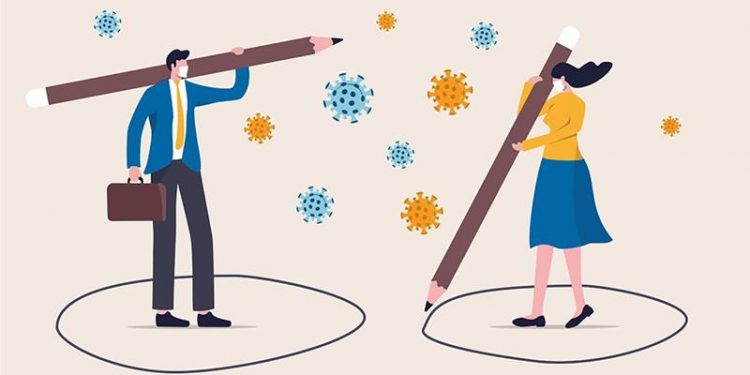Singapore: A combined approach of physical distancing – comprising quarantine, school closure, and workplace measures is most effective at reducing the number of novel coronavirus cases compared with many other interventions, according to a study published Tuesday.
The modelling study conducted in a simulated Singapore setting estimated that quarantine plus workplace measures, while less effective than the combined approach, presented the next best option for reducing COVID-19 cases. This was followed by quarantine plus school closure, and then quarantine only, according to the researchers. All intervention scenarios were more effective at reducing cases than no intervention, they said.
The study, published in ‘The Lancet Infectious Diseases’ journal, is the first of its kind to investigate these options for early intervention and prevention of the disease.
Despite heightened surveillance and isolation of individuals suspected to have COVID-19 and confirmed cases, the risk is ongoing, with the number of cases continuing to increase in Singapore, the researchers said.
Schools have not been closed, and workplace distancing is recommended, but it is not national policy as yet, the researchers pointed out. The study found that the combined approach could prevent a national outbreak at relatively low levels of infectivity.
However, at higher infectivity scenarios outbreak prevention becomes considerably more challenging because although effective at reducing infections, transmission events still occur.
“The results of this study provide information to Singapore and other countries with evidence to begin the implementation of enhanced outbreak control measures that could mitigate or reduce local transmission rates if social distancing is deployed effectively and in a timely manner,” said Alex R Cook, from National University of Singapore.
To assess the potential impact of interventions on outbreak size, should local containment fail, the researchers developed an individual-based influenza epidemic simulation model. Using this model, the researchers estimated the cumulative number of CVID-19 infections at 80 days, after detection of 100 cases of community transmission.
Agencies






































